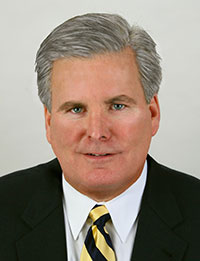By David Schmiege

Incident-to billing brings with it confusion to practice operations, risks and liabilities associated with audits, as well as a hidden negative financial impact. Incident-to guidelines include specific guidance on what services may be billed under these provisions, plus information on reimbursement issues, carrier allowance variations, scheduling issues, and the controversy over which providers are permitted to bill incident-to. Remember that “incident-to” is a term that relates mostly to Medicare services. Most other payers choose not to follow the same protocols when midlevel services are reported.
There is even more confusion when we add in the concept of split/shared services along with incident-to services. Split/shared services indicate when the physician needs to personally see the same patient the midlevel is seeing. Add to this the fact that incident-to services continue to be targeted by payer audits and the question becomes this: is the risk really worth the reward of that extra 15 percent in reimbursement?
In order to perform a financial risk analysis properly, let’s make sure we have a clear understanding of incident-to services by summarizing some key aspects of these services:
- Incident-to services are a Centers for Medicare & Medicaid Services (CMS) benefit definition, but they are not relevant to many other payers.
- A service is considered to be incident-to when a midlevel provider bills for his or her rendered services under their supervising provider’s name and National Provider Identifier (NPI).
- There is a listing of “acceptable” midlevel providers who can perform incident-to services, with the listing generally including nurse practitioners, physician assistants, certified nurse midwives, and clinical nurse specialists.
- Each practice performing incident-to services must have an employment or independent contractor arrangement with any midlevel provider who bills for services under incident-to rules, including a Scope of Practice Agreement.
- One physician may not bill for service under another physician’s name and NPI and then claim it is an incident-to service.
- A midlevel may be credentialed by Medicare to bill directly for services rendered under his or her own name and NPI, but the reimbursement drops from 100 percent of the allowed amount to 85 percent of the allowed amount.
In addition to the overall rules for incident-to services, there are these rules for each specific patient encounter:
- Services billed as incident-to must be furnished under direct supervision, meaning the supervising physician must be in the office in the same general working area as the midlevel provider at the time of the service and must remain available to offer immediate assistance.
- New patient visits cannot be billed as incident-to and therefore fall under the split/shared services rule. The split/shared services rule requires that with a new patient encounter, the supervising physician must document his or her review of the history, perform key portions of the exam, and create a plan of care for the patient. This requires the physician to also see the patient face-to-face, making the visit a split or shared service when the midlevel provider sees the patient during the same encounter. The only other option to collect 100 percent of the allowed charge is for all new patient encounters to be handled solely by the physician.
- Established patients who present with new problems also must have a face-to-face encounter with the supervising physician, along with the creation of a plan of care for at least the new problem.
- The documentation must indicate the involvement in the encounter for the midlevel as well as the supervising physician for all split/shared services.
Despite all of the rules and regulations for incident-to services, there are two major reasons practices push to bill them as often as possible:
- Doing so eliminates the need to have midlevel providers credentialed by Medicare to directly bill for services.
- Performing incident-to services enables the practice to be paid 100 percent of the allowed amount (versus 85 percent for services billed by the midlevel provider directly).
Practices rarely consider the additional costs associated with incident-to services, but some are consumed by how much it would cost to not perform such services. However, full compliance with the rules for incident-to billing creates additional work for the providers. The risk of not following these rules very precisely could lead to the services being billed incorrectly, leaving the practice liable.
Let’s use some conservative examples to analyze the hidden costs involved in performing services incident-to.
The two biggest risk areas for added costs are new patient encounters and established patients who present with new problems. It is not unusual for an established patient to present with a new problem during a visit with a midlevel provider, meaning the midlevel provider has to bring the physician into the encounter in order to be able to bill for 100 percent of the Medicare allowed charge. When considering a practice’s volume of new patients and the volume of established patients with new problems, this could add up to a large number of patients who require an encounter with both providers.
These visits represent significant overhead expenses as well as increased work involved with each patient encounter, all yielding a minimal amount of extra payment.
David Schmiege is the president and CEO of Vein Specialists of America Ltd. He can be reached at (630) 638-0060 or at [email protected].


